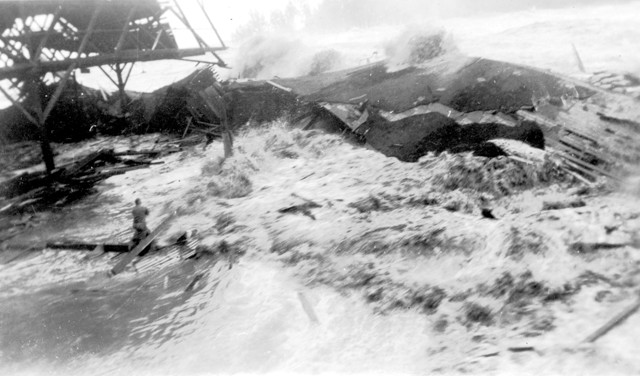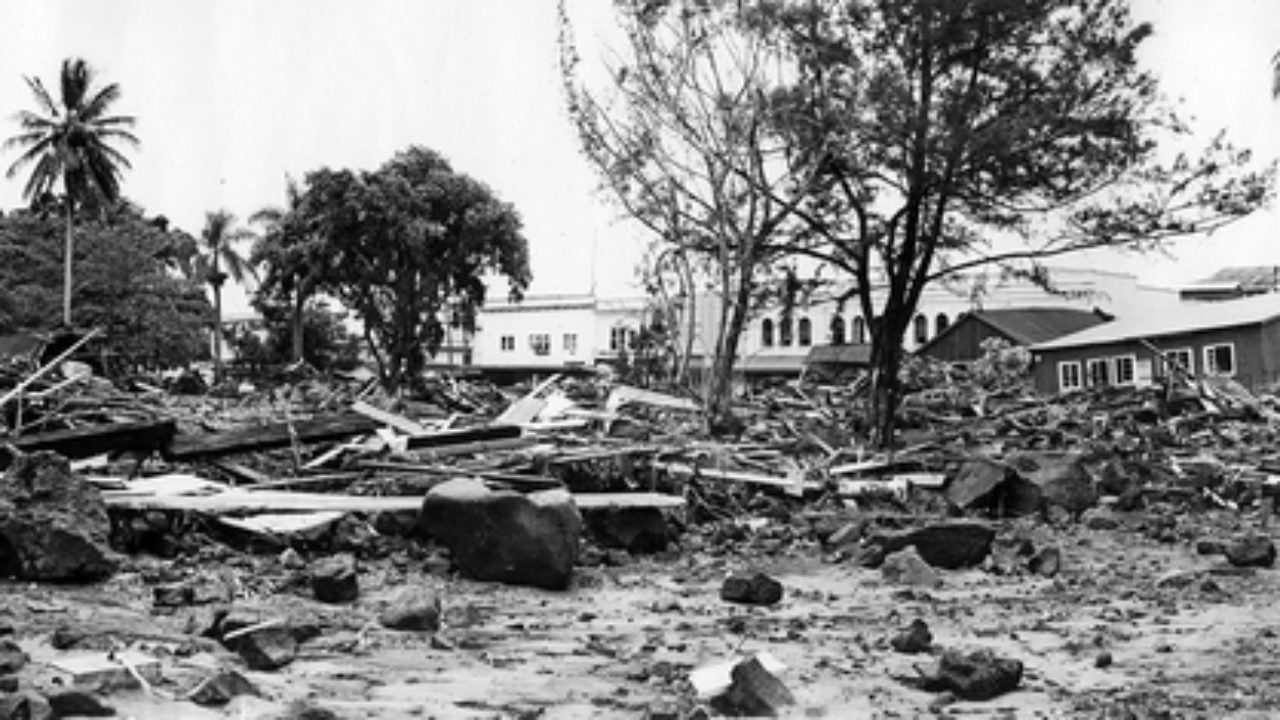

/cloudfront-us-east-1.images.arcpublishing.com/gray/QFAU6CMBAFHJPIXOT6IOWIRRLA.jpg)
On April 1, 1946, an undersea earthquake off the Alaskan coast triggers a massive tsunami that kills 159 people in Hawaii.
In the middle of the night, 13,000 feet beneath the ocean surface, a 7.4-magnitude tremor was recorded in the North Pacific. (The nearest land was Unimak Island, part of the Aleutian chain.) The quake triggered devastating tidal waves throughout the Pacific, particularly in Hawaii.
Unimak Island was hit by the tsunami shortly after the quake. An enormous wave estimated at nearly 100 feet high crashed onto the shore. A lighthouse located 30 feet above sea level, where five people lived, was smashed to pieces by the wave; all five were killed instantly. Meanwhile, the wave was heading toward the southern Pacific at 500 miles per hour.
In Hawaii, 2,400 miles south of the quake’s epicenter, Captain Wickland of the United States Navy was the first to spot the coming wave at about 7 a.m., four-and-a-half hours after the quake. His position on the bridge of a ship, 46 feet above sea level, put him at eye level with a “monster wave” that he described as two miles long.
As the first wave came in and receded, the water in Hawaii’s Hilo Bay seemed to disappear. Boats were left on the sea floor next to flopping fish. Then, the massive tsunami struck. In the city of Hilo, a 32-foot wave devastated the town, completely destroying almost a third of the city. The bridge crossing the Wailuku River was picked up by the wave and pushed 300 feet away. In Hilo, 96 people lost their lives.
On other parts of the island of Hawaii, waves reached as high as 60 feet. A schoolhouse in Laupahoehoe was crushed by the tsunami, killing the teacher and 25 students inside. The massive wave was seen as far away as Chile, where, 18 hours after the quake near Alaska, unusually large waves crashed ashore. There were no casualties.
This tsunami prompted the U.S. to establish the Seismic SeaWave Warning System two years later. The system, now known as the Pacific Tsunami Warning System, uses undersea buoys throughout the ocean, in combination with seismic-activity detectors, to find possible killer waves. The warning system was used for the first time on November 4, 1952. That day, an evacuation was successfully carried out, but the expected wave never materialized.
It is my sincere desire to provide readers of this site with the best unbiased information available, and a forum where it can be discussed openly, as our Founders intended. But it is not easy nor inexpensive to do so, especially when those who wish to prevent us from making the truth known, attack us without mercy on all fronts on a daily basis. So each time you visit the site, I would ask that you consider the value that you receive and have received from The Burning Platform and the community of which you are a vital part. I can't do it all alone, and I need your help and support to keep it alive. Please consider contributing an amount commensurate to the value that you receive from this site and community, or even by becoming a sustaining supporter through periodic contributions. [Burning Platform LLC - PO Box 1520 Kulpsville, PA 19443] or Paypal
-----------------------------------------------------
To donate via Stripe, click here.
-----------------------------------------------------
Use promo code ILMF2, and save up to 66% on all MyPillow purchases. (The Burning Platform benefits when you use this promo code.)






I got to experience the Nov 30, 2018, earthquake in Anchorage. It was a 7.0, just 7 miles epicenter from downtown Anchorage. It sounded like a train was in your front yard, and the house rumbled and rolled for over a minute. Up to that point I did not mind earthquakes as they are very common in Anchorage. Now when we have one. It’s oh shit not again. There were thousands of aftershocks for months after the main quake. Most you can’t feel, but some you can. I was very lucky as only one vase broke. I met people that every glass in the house broke. My house had some fine cracks in corners is all the damage we had. The stores had a lot of spilled shelves and damaged lights. It is something I hope to never experience again. Big quakes are no joke.
I grew up in earthquake country – my junior high was called “San Andreas Junior High” because the fault ran through the playground. Inside the building there were large cement blocks overhead as part of the design, I remember trying not to sit under them.
Anyway, I’ve been in more than one earthquake, the 1994 Northridge being the most notable. So I have a healthy respect for them. And I would NEVER live in a tsunami zone. I lived in Hawaii for awhile, the locals live AWAY from the beaches, not just because of cost. They’re not stupid. Unlike the situation on the Oregon coast today. This article says they are NOT building schools, hospitals, fire stations and old folk homes in the tsunami zone, but they are.
https://www.newyorker.com/magazine/2015/07/20/the-really-big-one